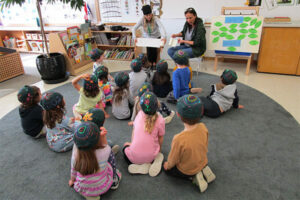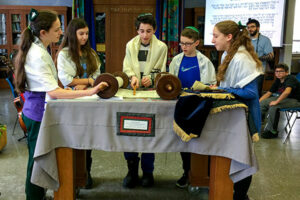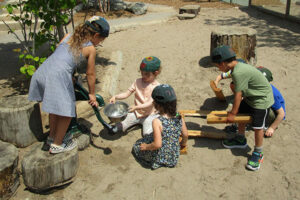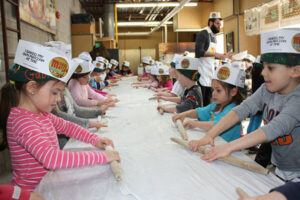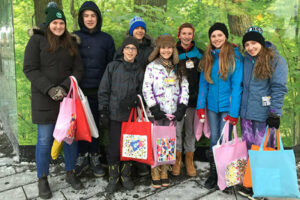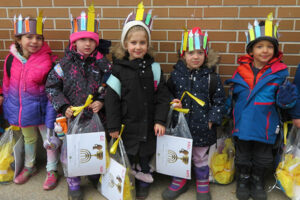This week’s Middat HaShavuah is taken from our Torah portion, Parshat VaYishlach. The Middah is:
Key Verse: וָאֶשְׁלְחָה לְהַגִּיד לַאדֹנִי, לִמְצֹא-חֵן בְּעֵינֶיךָ.
בראשית לב:ו
Middah: Resolve Conflicts
In this week’s Parsha, Ya’akov is returning to the land of Canaan after being away for 20 years after he tricked his brother Eisav into giving up his blessing. Upon his return, he hears that Eisav is approaching with a large army. Ya’akov sends out messengers with gifts to try to calm his brother down, and to resolve the conflict that has existed between the brothers for so many years.
Whether you are at home, at school, or in the workplace, as long as you are interacting with other people, there will always be relational conflicts that need solving. There is an art to conflict resolution, and skills that you can teach your children. Unfortunately, too many people would rather remain angry or hold grudges than deal with resolving conflicts. I believe that learning and practicing conflict resolution skills at a young age can help our children grow up making good decisions and having healthy and meaningful relationships. Not every conflict will be the same, and not every conflict can be resolved in the same manner. But understanding basic strategies can help most situations. Depending on the situation, there are several different options for conflict resolution. Here are a few conflict resolution steps that can help your child grow.
1. Cool off – First, before problem-solving can begin, children need time to regulate and return to a calm state. For younger children, have them take some deep breaths. It’s hard to solve a problem when you’re so angry you can’t think straight. That’s why helping children learn to solve conflicts starts with helping them keep calm.
2. Share, listen, check – Children need to listen to each other share their issues, and then check that they understand them. This takes practice and coaching from an adult. When sharing, children should use respectful but assertive “I statements,” like “I feel sad when you don’t let me play because I am alone.” Children can work on reflective listening and paraphrasing when they check for understanding. For example, they can start sentences with “I think I heard you say you feel …” or “So you want me to try to …”.
3. Take responsibility – Once children have shared their perspectives, they need to take responsibility for their own actions. You can prompt children by asking them an open-ended question like, “What could you have done differently to change what happened?”
4. Brainstorm solutions – Now the children can work together to find a solution that’s acceptable to both. This is a good time for children to learn to compromise. It can be helpful for an adult to start the discussion with some suggestions, but it’s best that the ideas come from the children themselves.
5. Choose a solution – Children now go over their brainstormed list of solutions to eliminate the ones that aren’t good for both of them and ones that won’t address future problems.
6. Affirm, forgive, or thank – Children can close out the session by acknowledging what happened and forgiving the other child (if an apology or forgiveness is warranted). They can then thank each other for working on the solution together.
There are so many conflicts in our world today! Little ones between family and friends, and big ones between nations. It is unrealistic to think that we could live in a world void of conflict; but if we had the skills to help us manage the conflicts that we do have, that would certainly be a step in the right direction! I hope that we can all take a moment to learn from this week’s Parsha and apply the six steps above so we can minimize conflict and resolve our conflicts when they do occur!
Shabbat Shalom U’Mevorach!
Moreh Alan

